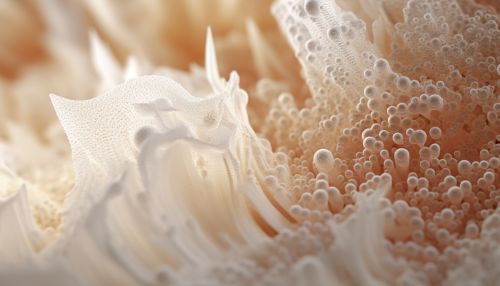Mechanisms of Microbial Bioplastics Production
Introduction
Microbial bioplastics are a type of bioplastic produced by microorganisms, typically bacteria. These bioplastics are an alternative to traditional petroleum-based plastics, offering benefits such as biodegradability and a reduced carbon footprint. The production of microbial bioplastics involves the use of microorganisms to convert organic substrates into biopolymers, which are then processed into plastic products. This article will delve into the mechanisms of microbial bioplastics production, including the types of microorganisms used, the substrates they consume, and the biopolymers they produce.


Microorganisms in Bioplastics Production
The production of microbial bioplastics primarily involves the use of bacteria, although yeasts and algae can also be used. These microorganisms are capable of producing biopolymers, the building blocks of bioplastics, through the process of fermentation. The most commonly used bacteria in bioplastics production are the genera Alcaligenes, Azotobacter, Bacillus, Cupriavidus, Escherichia, Pseudomonas, and Ralstonia. These bacteria are chosen for their ability to produce high yields of biopolymers and for their ability to consume a wide range of substrates.
Substrates in Bioplastics Production
The substrates used in microbial bioplastics production are typically organic compounds that the microorganisms can metabolize. These can include sugars, such as glucose and fructose, as well as starches, cellulose, and even waste products like glycerol and organic acids. The choice of substrate can greatly affect the yield and properties of the resulting bioplastic. For example, using glucose as a substrate can result in a high yield of polyhydroxyalkanoates (PHAs), a type of biopolymer commonly used in bioplastics production.
Biopolymers in Bioplastics Production
The biopolymers produced by microorganisms in bioplastics production are primarily polyhydroxyalkanoates (PHAs) and polylactic acid (PLA). PHAs are produced by bacteria through the fermentation of organic substrates, while PLA is typically produced by the fermentation of lactic acid by bacteria. These biopolymers are then processed into plastic products through techniques such as extrusion, injection molding, and blow molding.
Production Process
The production of microbial bioplastics begins with the cultivation of the microorganisms in a nutrient-rich medium containing the chosen substrate. The microorganisms consume the substrate, converting it into biopolymers within their cells. Once a sufficient amount of biopolymers has been produced, the cells are harvested and the biopolymers are extracted. The biopolymers are then processed into plastic products using various techniques.
Challenges and Future Directions
Despite the many advantages of microbial bioplastics, there are also challenges to their production and use. These include the high cost of production, the need for pure cultures of microorganisms, and the relatively low yield of biopolymers compared to petroleum-based plastics. However, research is ongoing to overcome these challenges and to improve the efficiency and sustainability of microbial bioplastics production.
